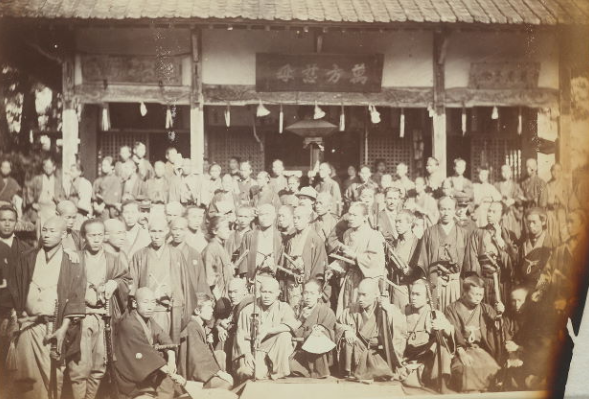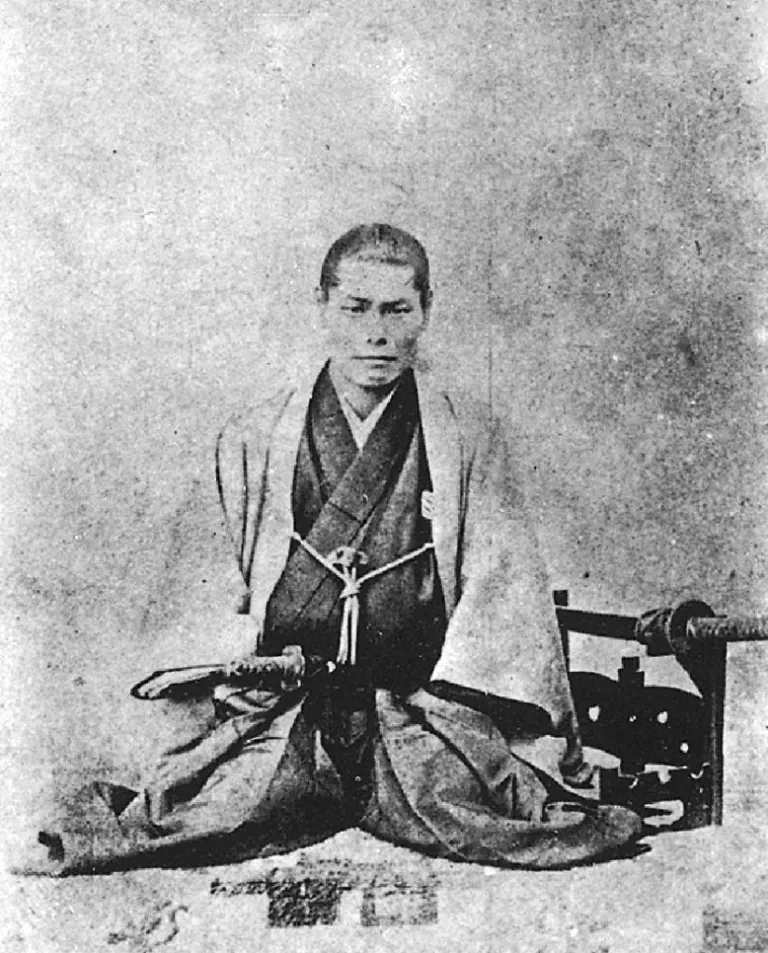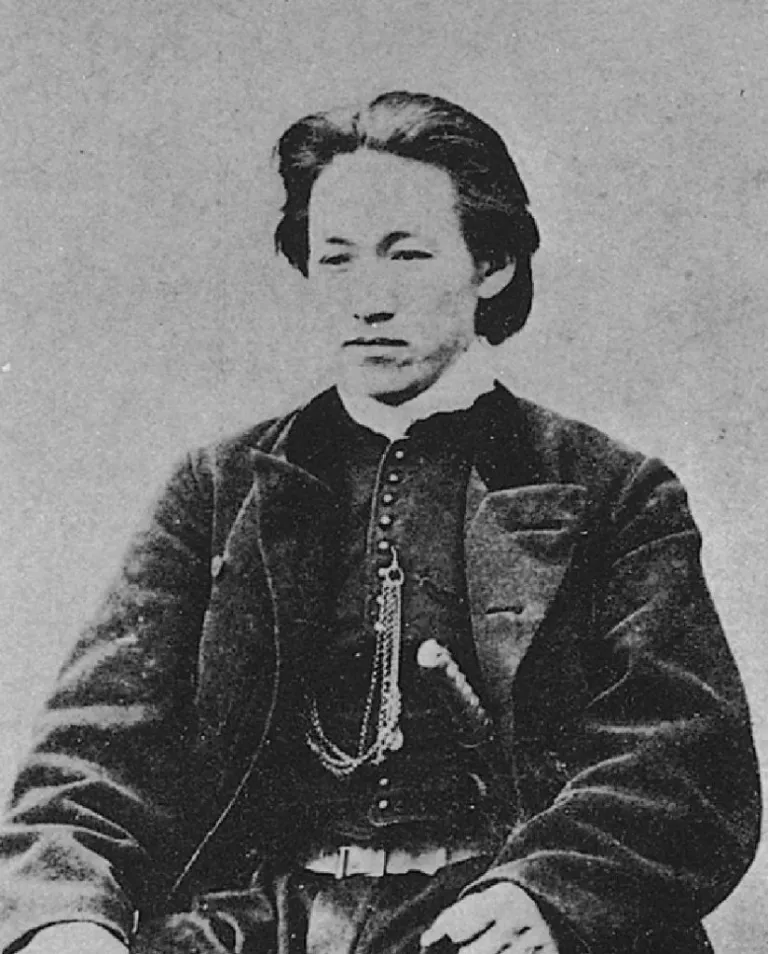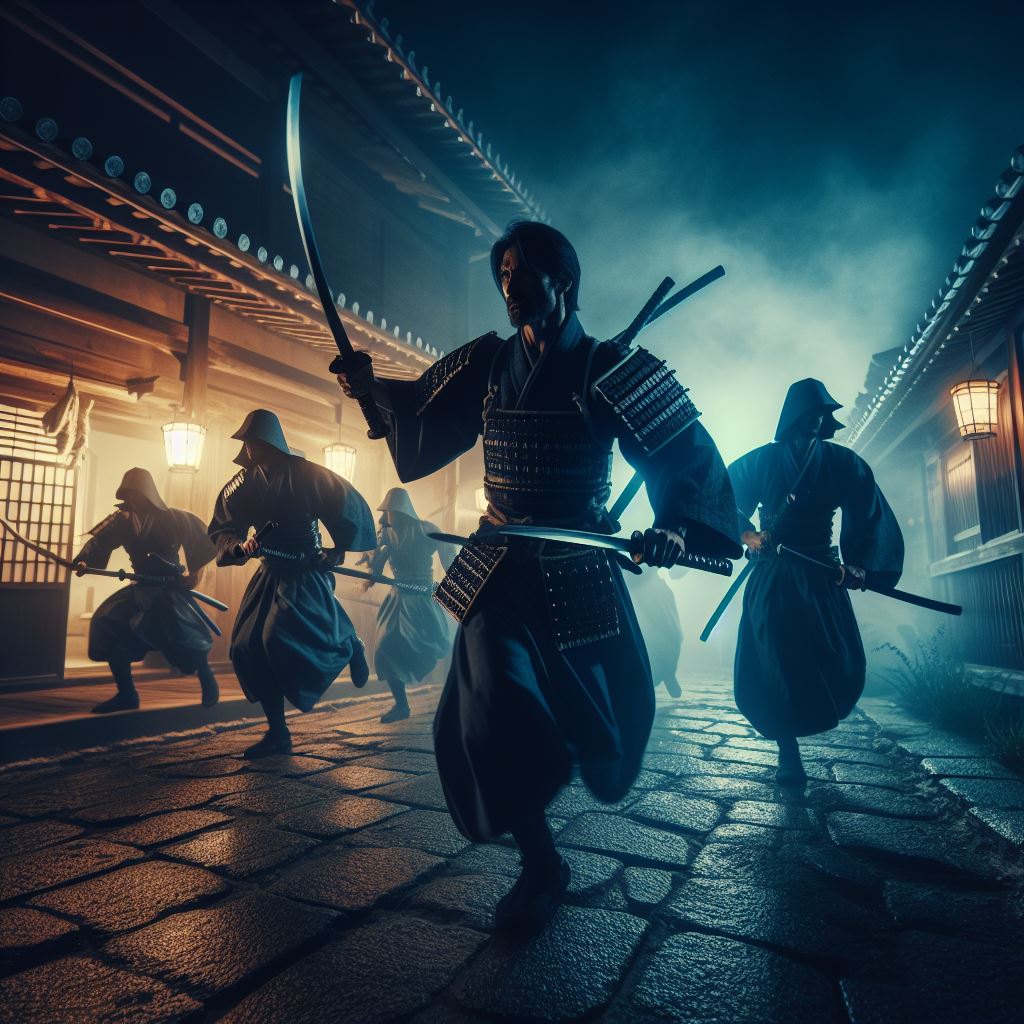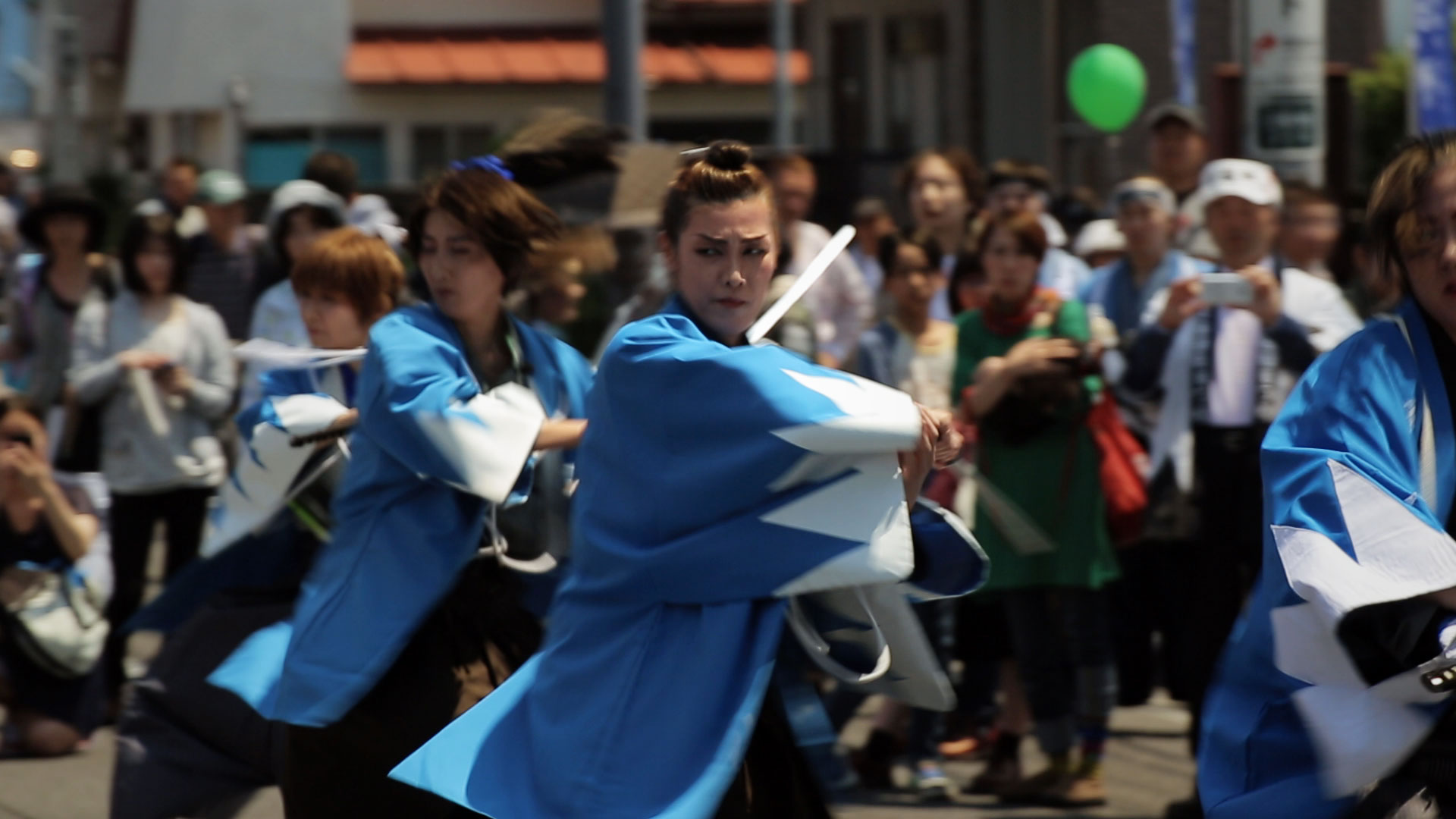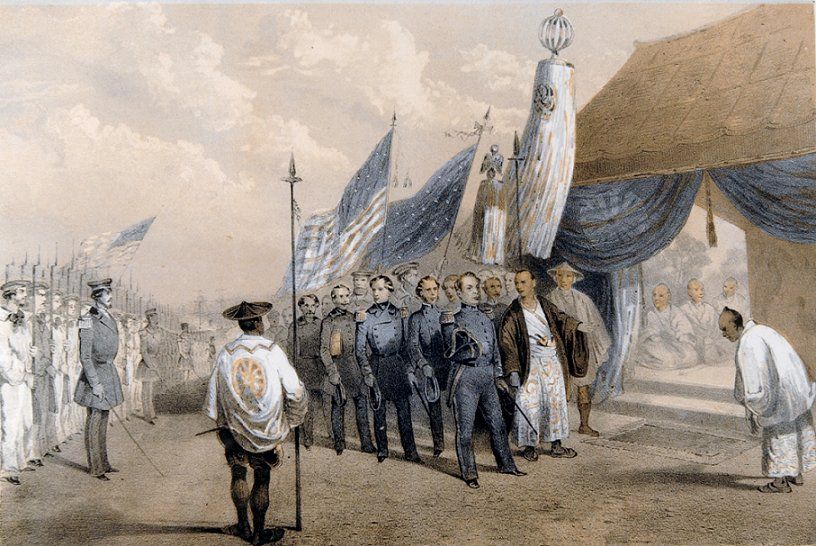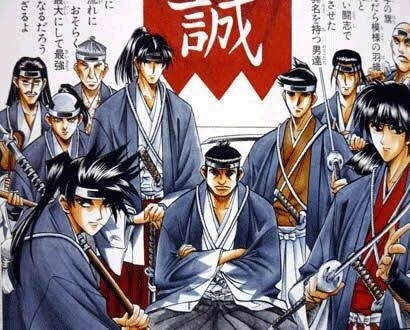Samurai Clash with Rōnin at Ikedaya Bar – The Night the Inn Became a Bloody Battlefield
 One July night...
One July night...
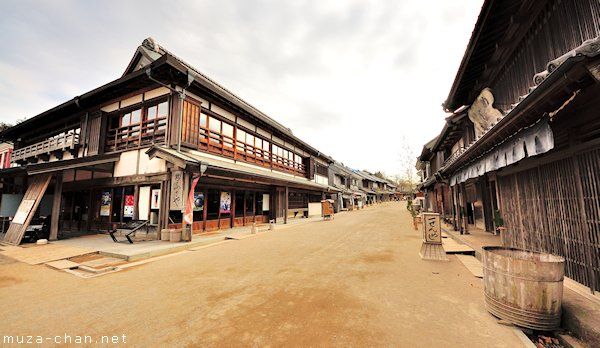
Due to the large number of samurais in a very small and unusual setting (tight bar rooms – a city tavern) and because of the fierce ferocity of the fight, this incident (or rather, this atypical samurai battle) is considered one of the most brutal and bloody encounters of the era.
That night, the conspiracy of the rebels and the blades of the samurai secret police met at the culmination of one of the most tense episodes of the Japanese Bakumatsu. The Ikedaya Incident not only decided the life and death of many people but also determined the future of the Tokugawa Shogunate, sparking a series of events that, despite the victory in the tavern, eventually led to the fall of the shogun's power, a return to imperial rule, and a 180-degree change in the country's policy (from a closed country to an open one that began to modernize intensely – it was the end of the Edo era and the beginning of the Meiji).
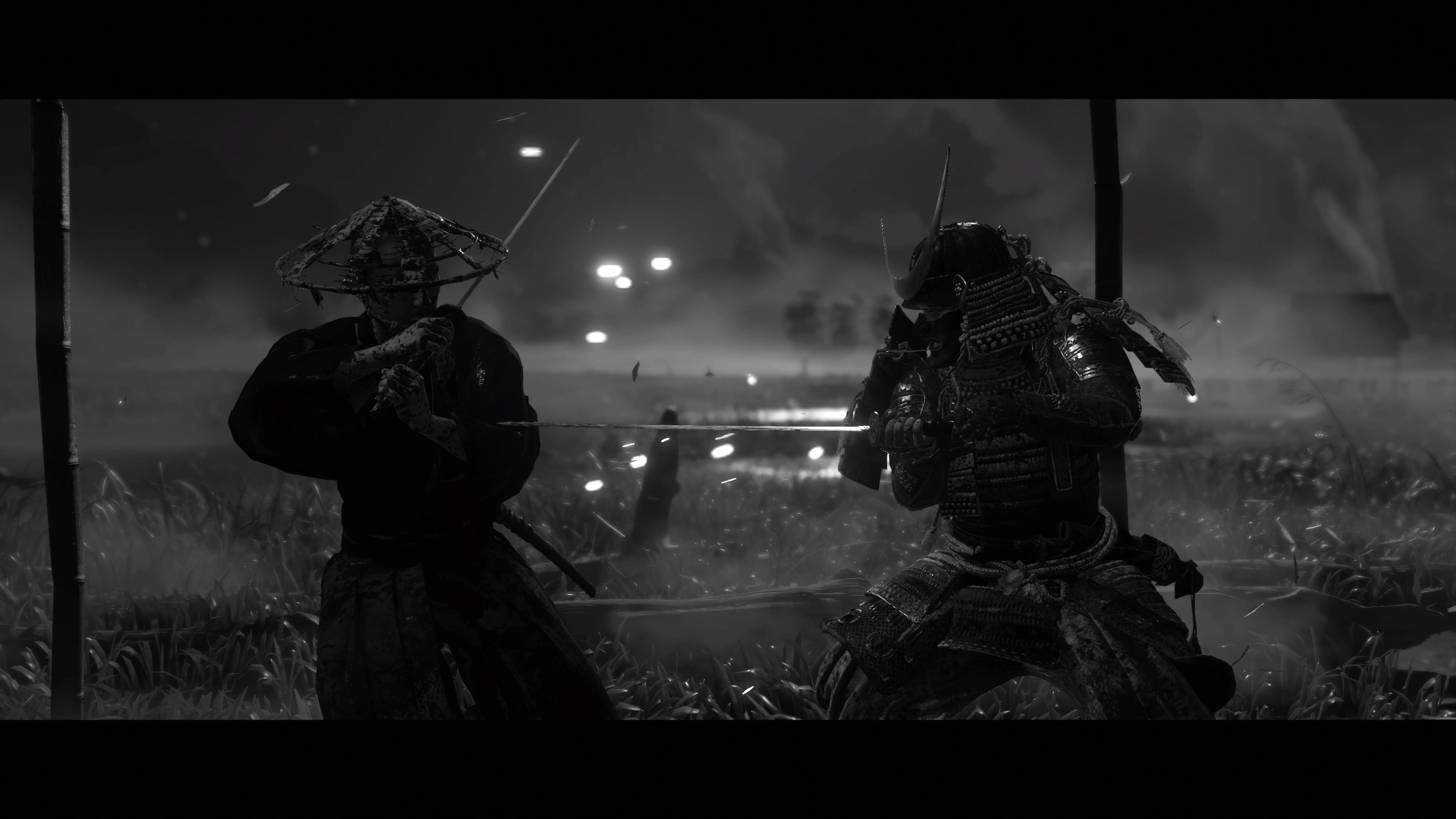
Interesting Times
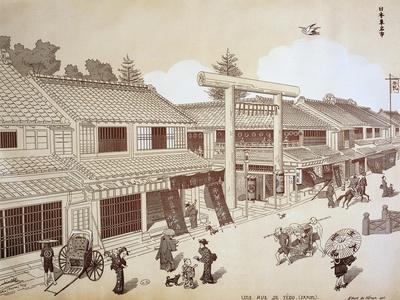
The impact of the West began spectacularly in 1853 when American Commodore Matthew Perry led a fleet of black ships ("Kurofune") into Uraga Bay. Through diplomatic aggression and a show of military force, Perry forced Japan to sign the Kanagawa Treaty in 1854, ending over 200 years of the isolationist sakoku policy. Opening ports to foreign ships not only initiated international trade but also brought deep and turbulent social and political turbulence to the Land of the Rising Sun.
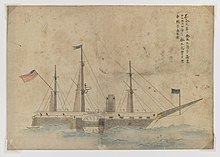
Tensions reached a climax when imperial loyalists from the Chōshū and Satsuma regions began to openly oppose the shogunate, demanding the restoration of power to the emperor and the renewal of national sovereignty. It was these factions that would become the future architects of the Meiji Restoration, which in 1868 ended the rule of the shogunate and initiated the modernization of Japan in the Western spirit.
Against the backdrop of these events, on the streets of Kyoto, in the shadow of the night and in the gloom of secret meetings, the Shinsengumi operated – a special police formation tasked with maintaining order and suppressing rising rebellions. Their actions, full of brutality but also heroic courage, have permanently entered the annals of Japanese history, especially through their participation in the Ikedaya Incident, which dramatically highlighted the drama unfolding beneath the surface of everyday life in a changing era.
Etymology and Naming
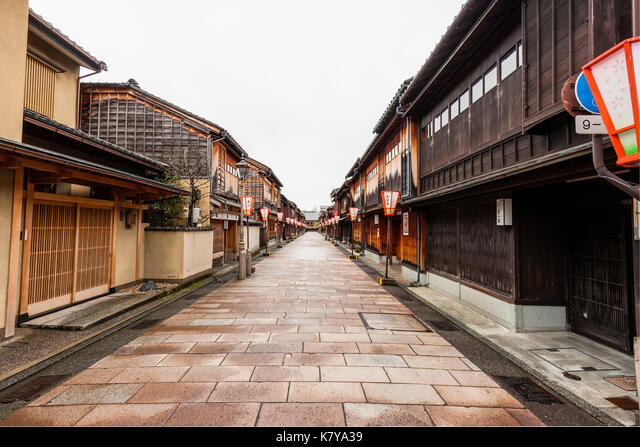
池田屋 (Ikedaya)
The name "Ikedaya" refers to the Ikedaya inn, the site of the bloody clash between the Shinsengumi and the radical samurais from Chōshū. The meaning of the word "Ike" is pond or water reservoir, "da" means field, and "ya" indicates a house or place, which in this context might mean "House by the pond".
 新選組 (Shinsengumi)
新選組 (Shinsengumi)
The term "Shinsengumi" translates as "Newly Selected Group" or "Newly Chosen Units". "Shin" means new, "sen" chosen or selection, and "gumi" group or team. It was a special police formation, organized by the bakufu (shogun's government), to enforce order and combat rebel movements in Kyoto during the late Edo period.
幕末 (Bakumatsu)
As previously mentioned, "Bakumatsu" means "end of the curtain" and refers to the last years of the Tokugawa Shogunate, particularly an intense period of political and social change before the Meiji Restoration.
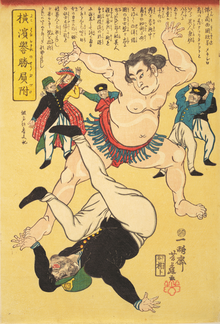
The slogan "Sonno Joi" means "Revere the Emperor, Expel the Barbarians" and was the motto promoted by nationalist factions that opposed the presence and influence of foreigners in Japan and sought to restore power to the emperor.
Kaikoku (開国)
The slogan "Kaikoku" means "Open the Country". It was a term used in opposition to the isolationist policy of sakoku, promoting the opening of Japan to foreign trade and cultural exchange. This slogan gained popularity following Commodore Perry's arrival and the signing of treaties that forced Japan to end its more than two-century long policy of closure.
Tōbaku (倒幕)
The slogan "Tōbaku" means "Overthrow the Shogunate". It was a motto propagated by factions aiming to overthrow the Tokugawa Shogunate and restore imperial power. Primarily used by radicals from the Satsuma, Chōshū, and Tosa domains, it emphasized the goal of political revolution and restoring full power to the emperor.
Fukoku Kyōhei (富国強兵)
The slogan "Fukoku Kyōhei" means "Enrich the Country, Strengthen the Military". It was adopted as a central element of government policy during the Meiji Restoration, promoting the modernization and industrialization of Japan as well as the building of strong military forces. This slogan reflected Japan's aspiration to attain a status equal to Western powers and to become independent from foreign influences by building a strong, modern economy and military.
Who Were the Shinsengumi?
 Description of the Shinsengumi Formation
Description of the Shinsengumi Formation
The Shinsengumi, which means "Newly Selected Corps," was formed in 1863 as a special police force tasked with protecting Kyoto during a period of heightened political and social tensions at the end of the Tokugawa Shogunate. This group was established at the initiative of the bakufu, or shogunate government, in response to the growing threat from emperor-loyalist movements that sought to overthrow the shogunate.
Structure and Significance
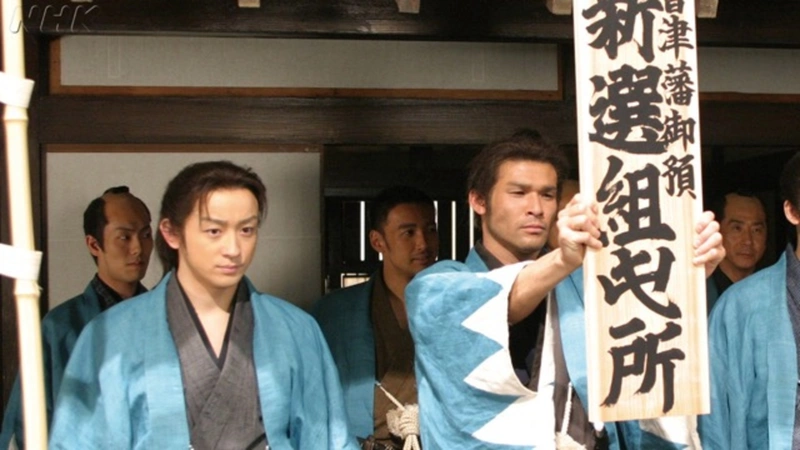
Group Leaders
For the Shinsengumi, the character and demeanor of a leader defined the attitude of the entire group. Even more so than in other units, what the leader said and how they acted set the tone for what the group thought.
-
Isami Kondō was the formal leader of the Shinsengumi. He came from a samurai family, and his leadership was decisive and based on strict discipline. Kondō had a strong sense of honor and loyalty to the shogun, which translated into the operations and morale of the group.
-
Toshizō Hijikata, the vice-commander of the Shinsengumi, was known for his severity and strategic mind and was the architect of many Shinsengumi tactics and operations. Hijikata also developed the Shinsengumi's code, which regulated members' actions based on strict bushidō principles. His uncompromising approach to discipline contributed to the group's reputation as an effective and brutal police force.
-
Sōji Okita, another legendary figure of the Shinsengumi, was the captain of the first unit and was regarded as one of the group's best swordsmen. His combat skills and youthful energy added additional dynamism and effectiveness to the Shinsengumi in direct confrontations. These leaders, along with other members of the command staff, shaped the Shinsengumi as an organization not only serving to maintain public order but also as a force that had its own culture and identity, becoming an icon of Japanese history, both in the context of their role in the Ikedaya Incident and in the broader context of the political turmoil of those times.
The Ikedaya Incident
The Calm Before the Storm
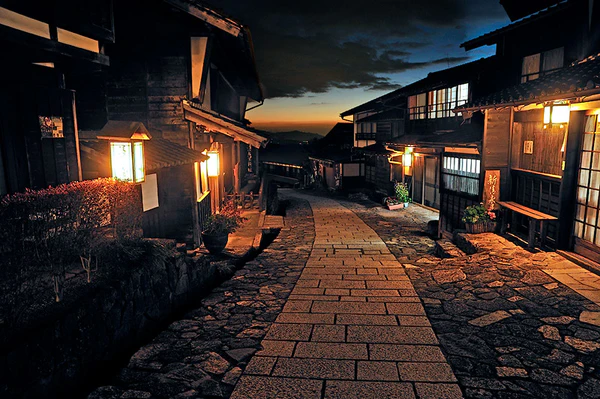
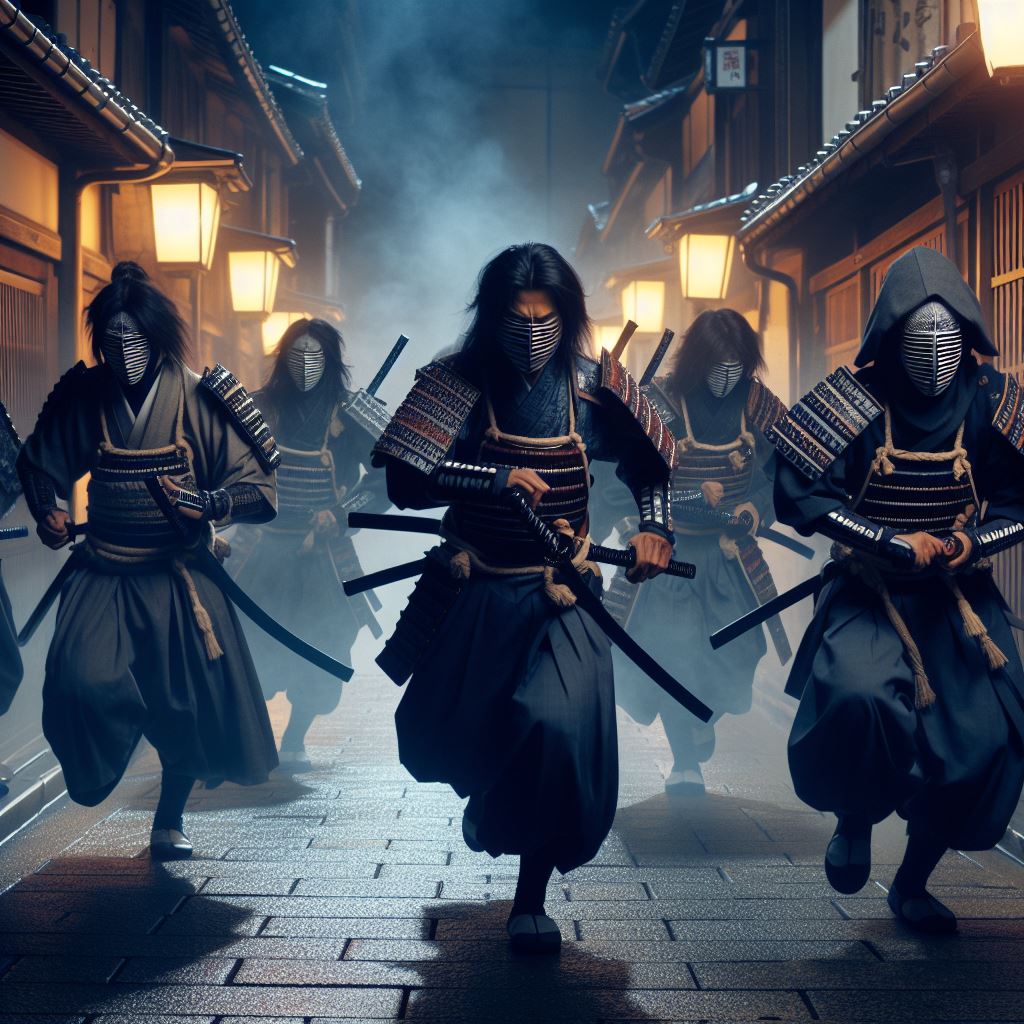
Kondō, wiping his brow, spoke softly to Hijikata, maintaining a stony expression: "This night will be remembered for ages. We must act with the speed and precision of our ancestors, without a shadow of error." Hijikata nodded, checking the position of his katana at his side.
 Strategy
Strategy
As Isami Kondō and Hijikata Toshizō approached the Ikedaya inn, their strategy was already meticulously planned. Known for his tactical precision, Hijikata divided his men into two groups. The main group, led by Kondō, was tasked with dynamically entering through the main entrance and directly confronting the rōnin inside. The second group, commanded by Hijikata, approached from the rear exit to cut off any escape chances.
When the doors of Ikedaya were breached, shock and chaos engulfed the rōnin gathered inside. Kondō's sword gleamed in the torchlight as he unexpectedly attacked the group of conspirators. Meanwhile, Hijikata and his men quietly encircled the building, reaching the rear exit. There, in the silence of the night, they prepared to execute their part of the plan.
Confrontation
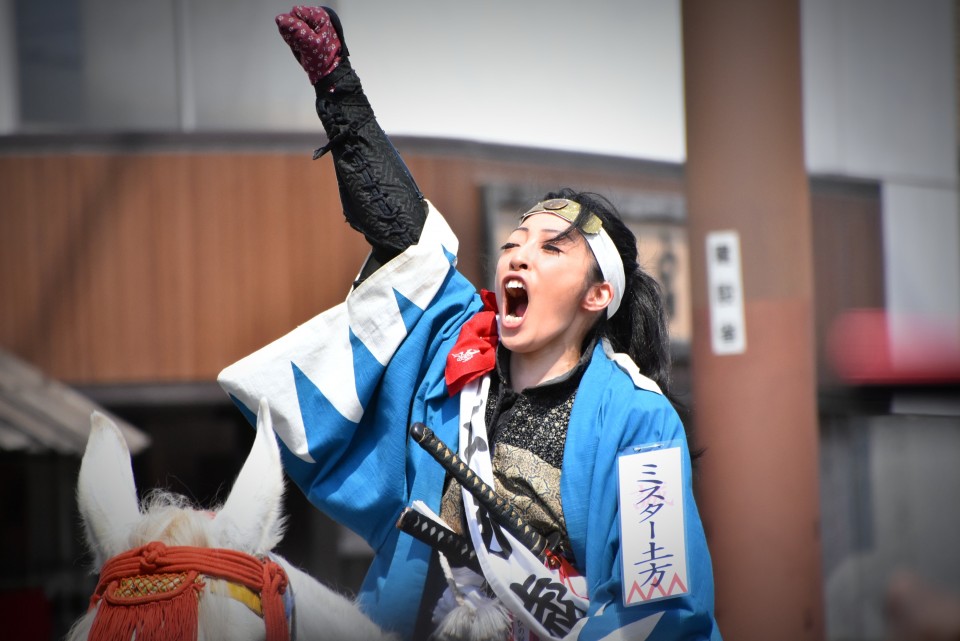
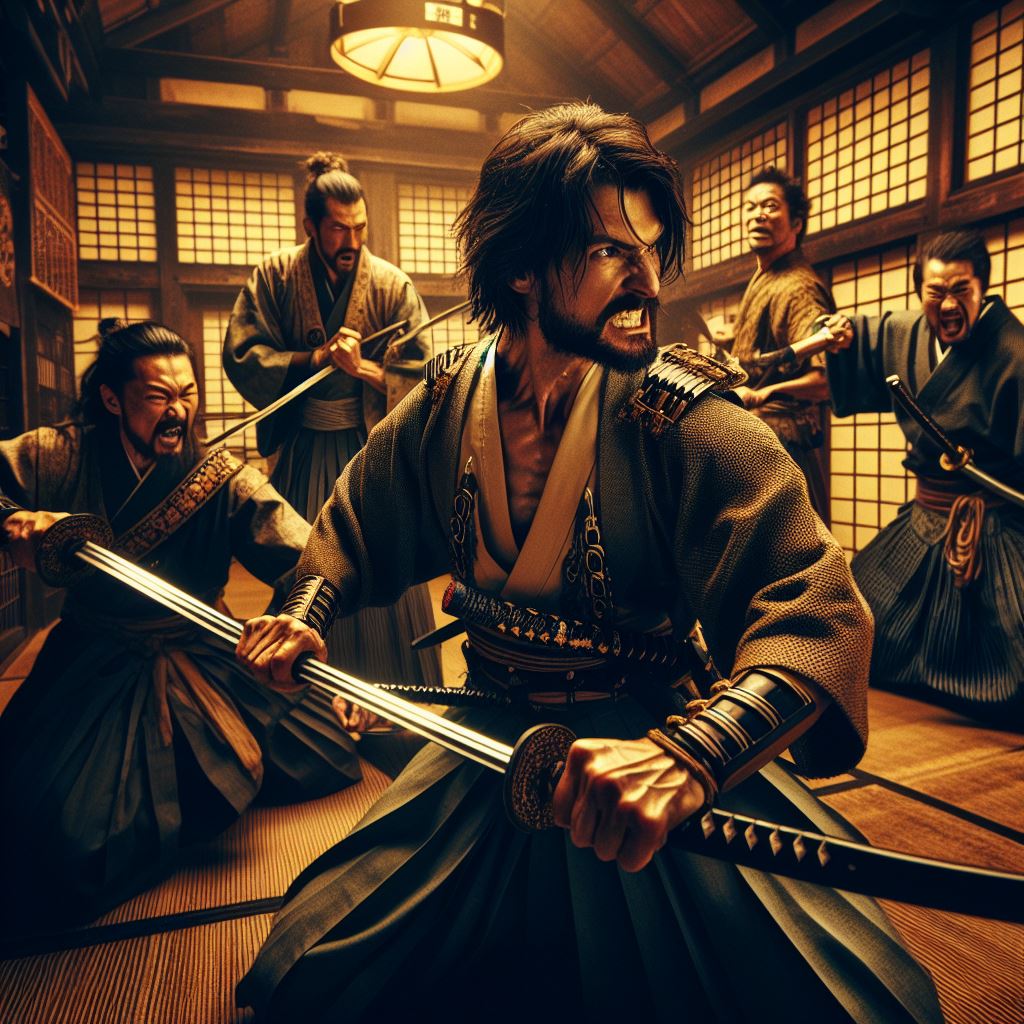
Inside the inn, the battle raged with full intensity. Kondō's sword pressed forward, his strikes precise and lethal. Screams, the clashing of steel, and the floors quickly covered with blood of the combatants filled the air. Some of the rōnin, caught in the siege, desperately tried to defend themselves, but the Shinsengumi's advantage was overwhelming.
Technique and Tactics
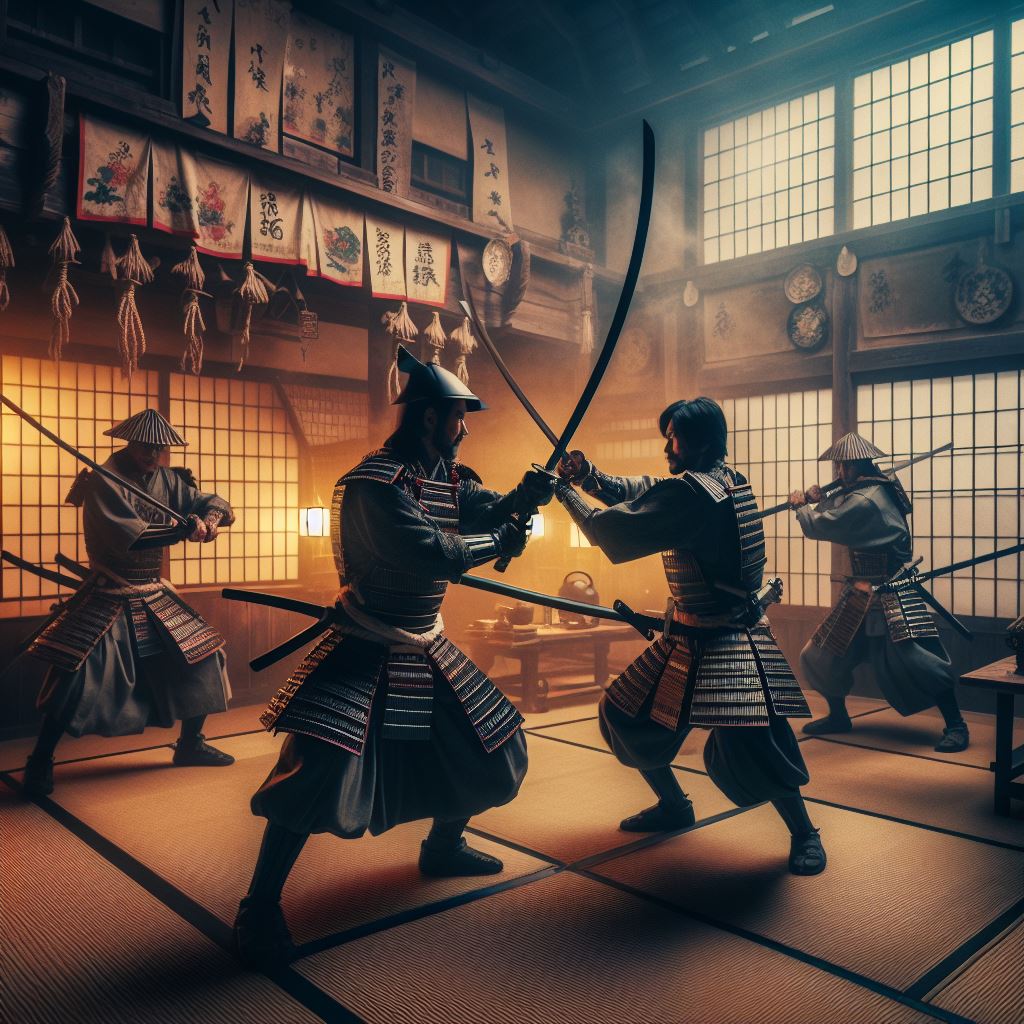
Reactions and Defense of the Rōnin
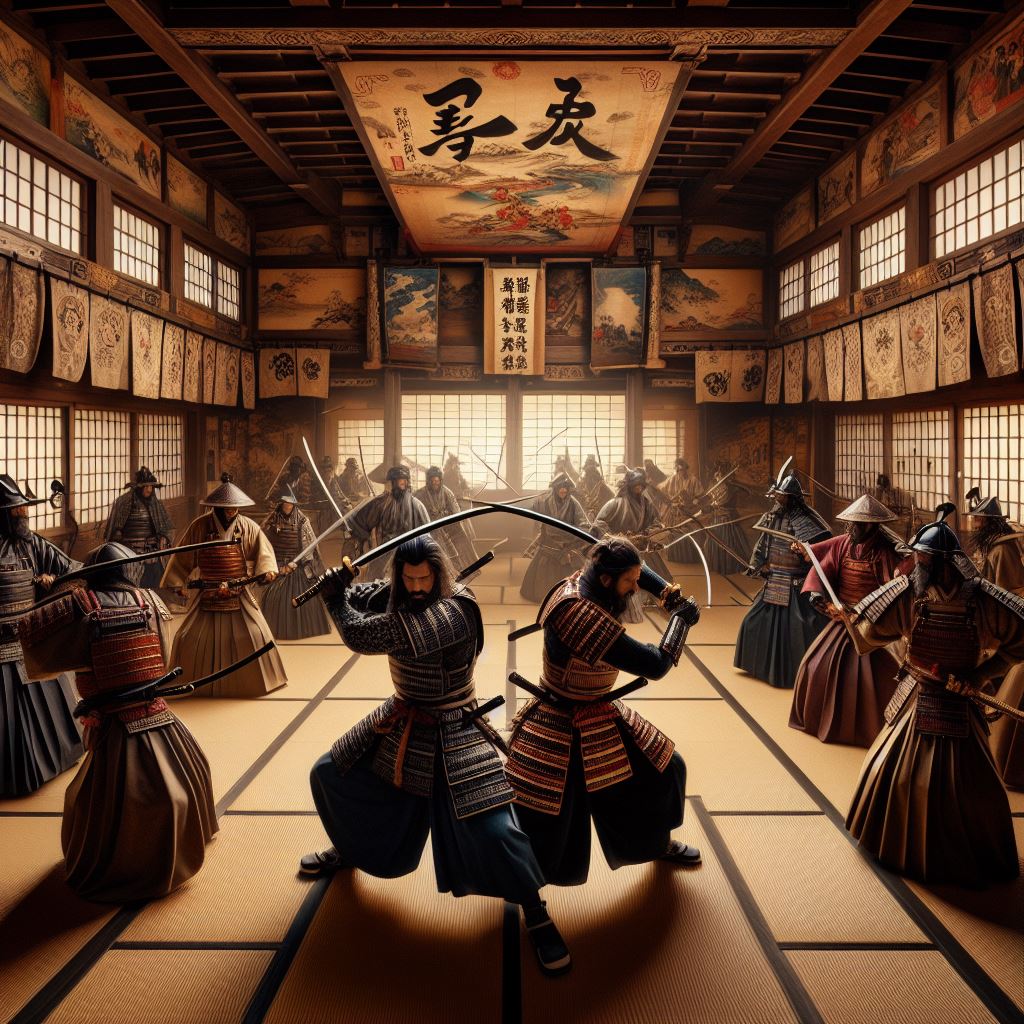

Climactic Point of the Fight
Isami Kondō, leading his unit, stormed onto the floor where he encountered a group of conspirators. His sword swung with precision and grace, honed by years of samurai swordsmanship training. In one of the rooms, a dramatic clash ensued, where Kondō faced off against one of the rebel leaders. Their swords collided with a loud clang as both warriors exchanged blows, each striving for the upper hand.
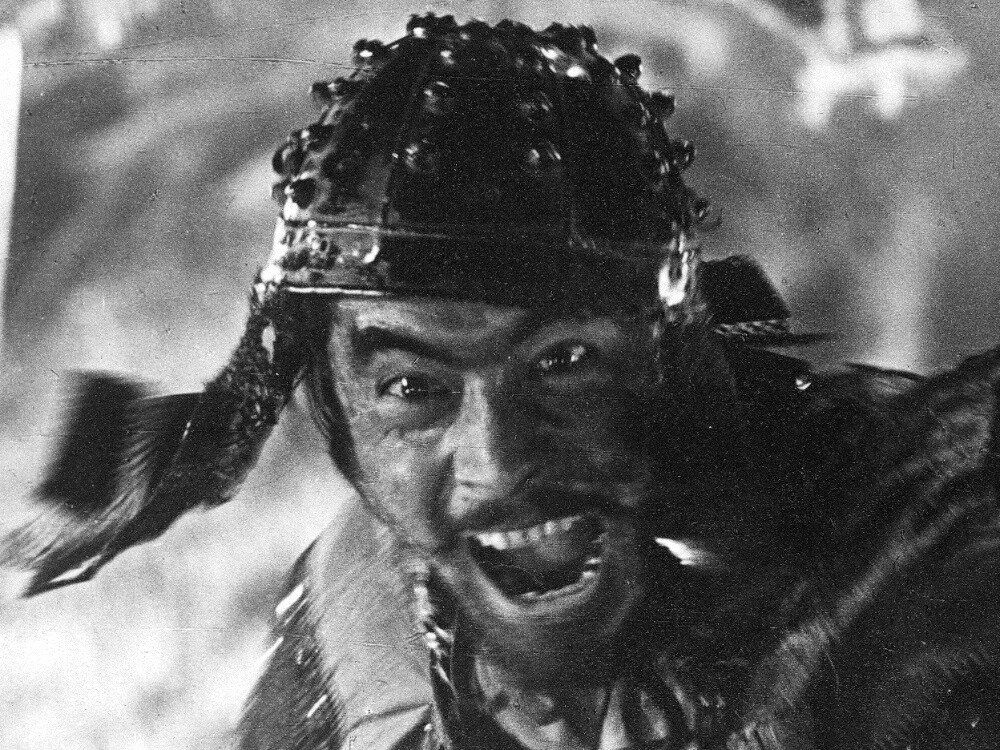
After two intense hours, the floors of the Ikedaya inn were covered in blood, and most of the conspirators were either killed or captured. Despite losses within their ranks, the Shinsengumi triumphed, demonstrating their brutal efficiency and loyalty to the shogun.
Dawn Over the Ikedaya Inn, July 9, 1864
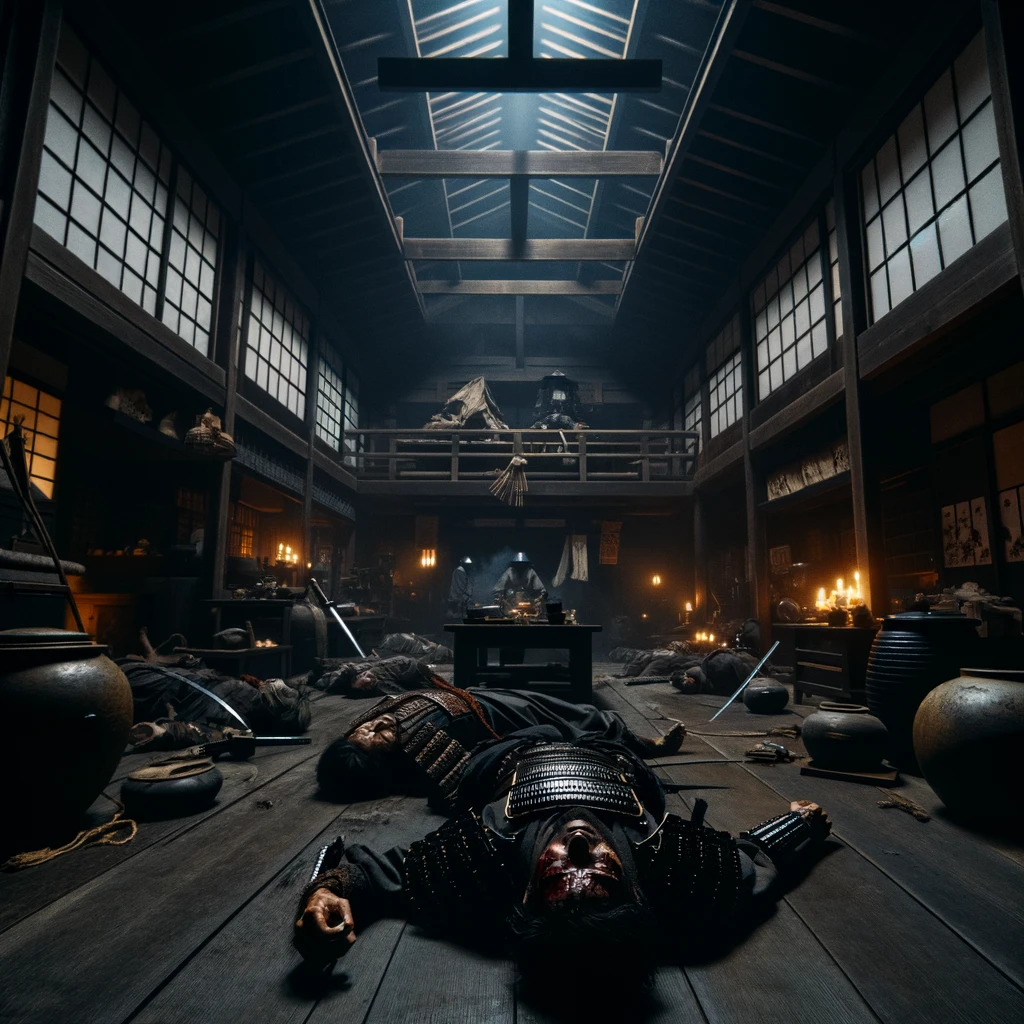
The bodies of fallen rōnin from Chōshū were scattered among the broken furniture and shattered doors, their faces contorted in a final grimace of pain and surprise. The Shinsengumi, though they had achieved a tactical victory, also suffered losses. Reports indicated several injured samurai, some of whom died from their wounds shortly after the battle. In total, the night's conflict resulted in the deaths of eight rōnin, with another twenty-three wounded and captured. Despite the high cost, the Shinsengumi effectively suppressed the planned rebellion, securing Kyoto from threat.
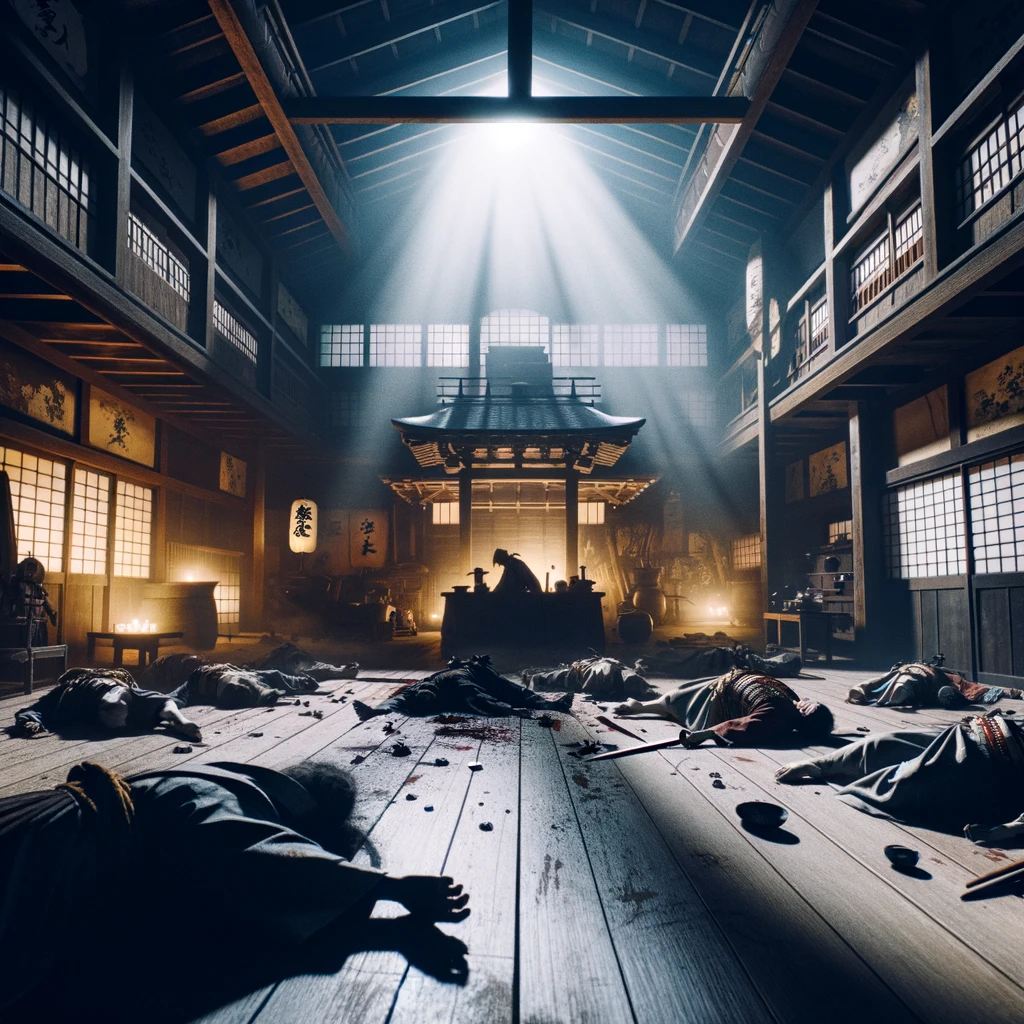
In the quiet aura of dawn, the Shinsengumi samurai slowly left the scene of the clash, carrying with them the bodies of their brothers and the awareness that history would remember this night.
Consequences of the Ikedaya Incident
The Ikedaya Incident, which took place on the night of July 8-9, 1864, became one of the defining moments for Japan during the Bakumatsu period, influencing both the course of political events and the perception of the Shinsengumi and the pro-imperial movements.
 Short-term
Short-term
Immediately following the incident, the Shinsengumi significantly grew in strength as a loyalist police force, earning the recognition of the shogun and his administration for their effectiveness and precision in suppressing rebellious factions. This victory solidified the Shinsengumi's position in Kyoto and granted them greater authority in maintaining order and security. However, the manner in which the Shinsengumi dealt with the rōnin led to increased criticism and concerns about their brutal methods. The Ikedaya Incident also exposed deep divisions in Japanese society and heightened tensions between supporters of the old order and forces pushing for reform and modernization.
 Long-term Effects
Long-term Effects
For the pro-imperial movements, particularly the Chōshū and Satsuma domains, the Ikedaya Incident marked a turning point that prompted them to rethink their strategies and organization. Despite their initial defeat, these domains intensified their efforts to overthrow the shogunate, which ultimately led to the Boshin War in 1868 and the Meiji Restoration. The Meiji Restoration not only reinstated imperial power but also initiated a period of intense modernization and Westernization of Japan, known as the Meiji era.
 Consequences for the Shinsengumi
Consequences for the Shinsengumi
Although the Shinsengumi gained significance in the short term, their long-term fate was less fortunate. As the pro-imperial forces gained strength, the position of the Shinsengumi became increasingly precarious. Eventually, with the advent of the Meiji era, the organization was disbanded, and its members either adapted to the new reality or met their ends. The Ikedaya Incident, despite being a military victory, contributed to deepening the negative image of the Shinsengumi among the supporters of the emperor, affecting their subsequent fate.
Ikedaya in Popular Culture
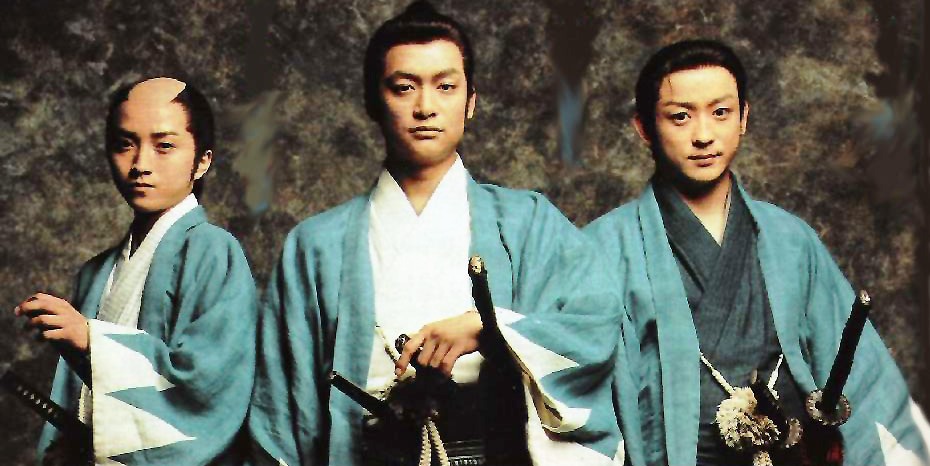
This film narrates the history of the Shinsengumi, including the Ikedaya Incident. Ikedaya is depicted as a crucial moment where the loyalty and courage of the Shinsengumi members are tested. The film emphasizes the drama and tension of the event, which was decisive for the group's future.
Manga "Gintama" (2003, Hideaki Sorachi)
The manga and anime "Gintama" feature characters and events loosely inspired by real historical figures and events from the Bakumatsu period, including the Shinsengumi. Ikedaya is mentioned as a backdrop for certain key events, adding a layer of authenticity to the story.
Anime "Hakuouki" (2010, Studio DEEN)
"Hakuouki" is an anime series about the Shinsengumi, incorporating supernatural elements. The Ikedaya Incident is a significant event, showcasing the heroic and tragic aspects of the conflict. The fight at the Ikedaya inn is portrayed as a moment of trial and sacrifice for the Shinsengumi members.
Video Games "Hakuoki: Kyoto Winds" / "Hakuoki: Edo Blossoms" (2017, Idea Factory)
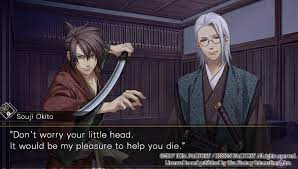
The portrayal of the Ikedaya Incident varies depending on who presents it, but it is always seen as a critical moment, a climax of a highly tense era in Japanese history.
In Conclusion – The Fate of the Inn Itself
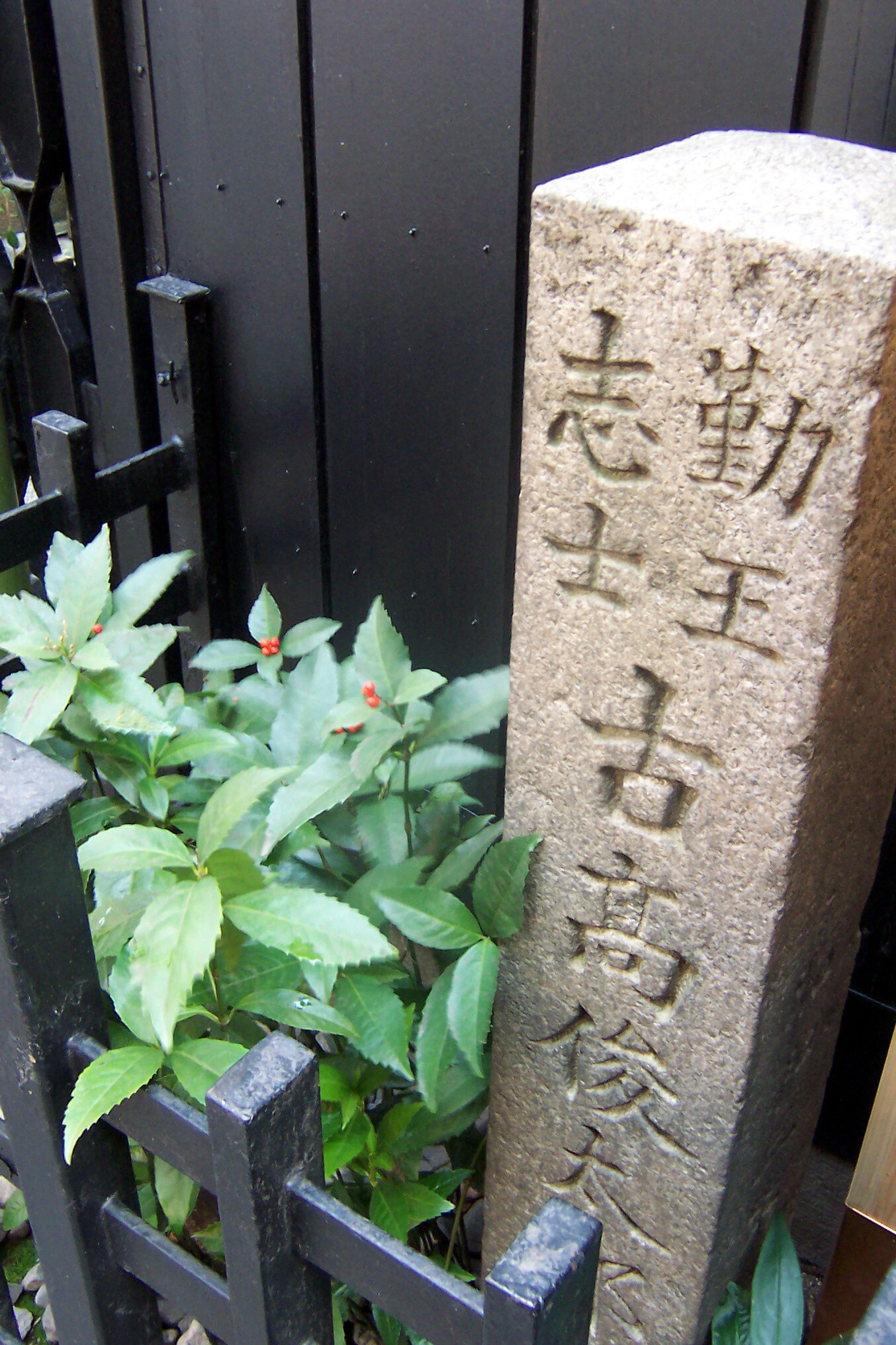
Today, the Ikedaya Incident is often recalled in Japan as a key moment that showcases both the heroism and the tragic aspects of the samurai code of bushido, interpreted through the prism of loyalty and sacrifice. The perception of the Shinsengumi, despite their controversial methods, remains predominantly positive, especially in popular culture, where they are portrayed as heroic yet tragic warriors.
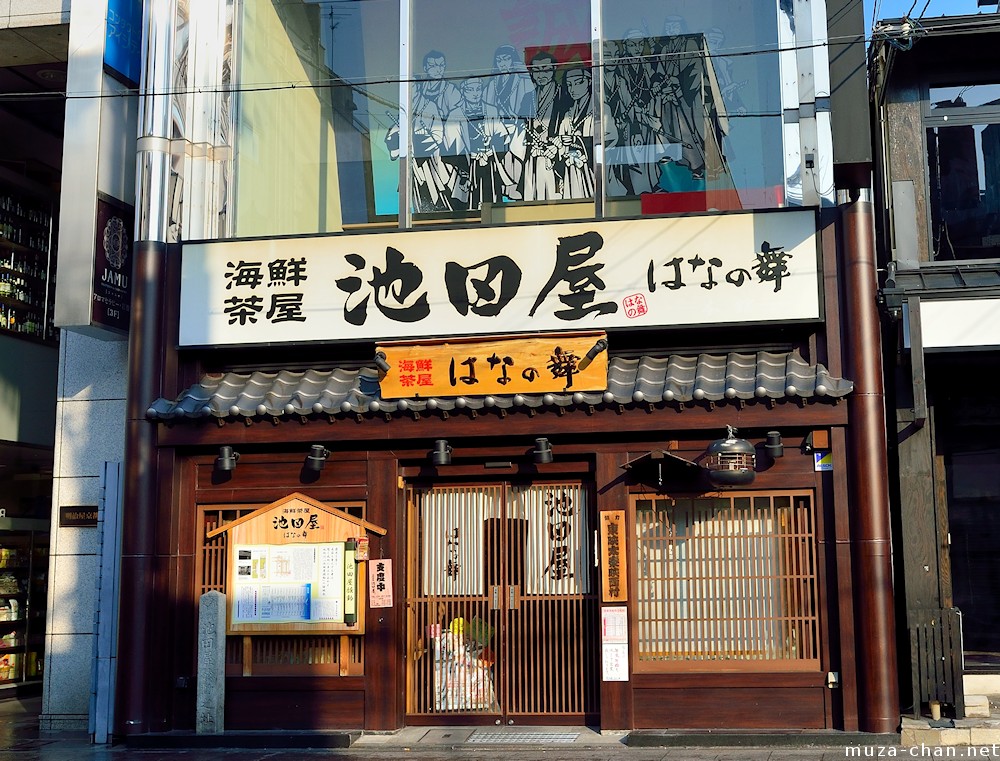
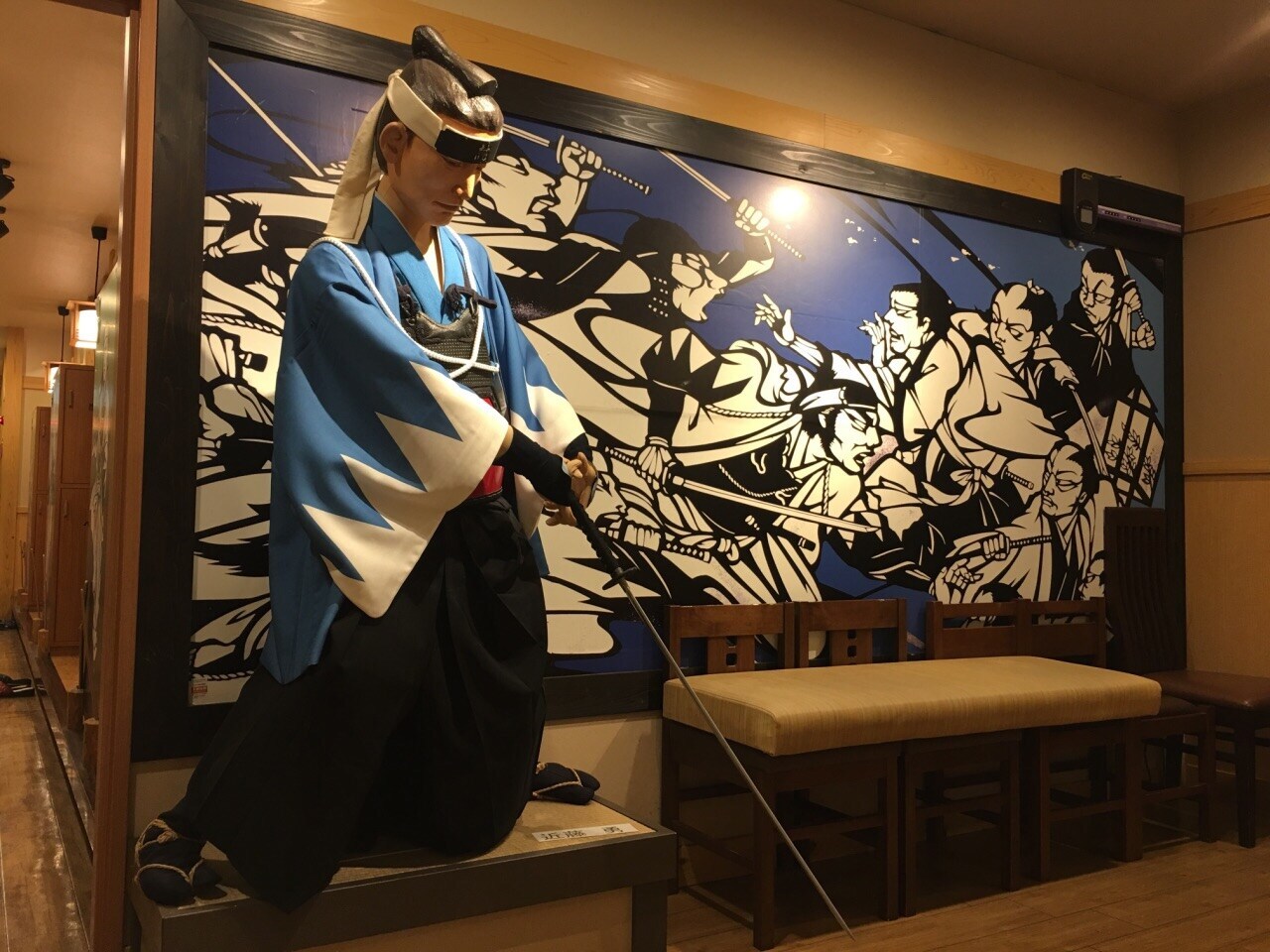
In 2009, a new izakaya (a casual Japanese bar) named Ikeda-ya opened, with décor and themes that hark back to the Shinsengumi and the Bakumatsu era, serving as a tribute to the dramatic history of the place. This new izakaya not only serves as a reminder of turbulent times but also as a venue where contemporary guests can experience and feel a bit of the history of those times.
>>SEE SIMILAR ARTICLES:
The Enduring Legacy of the Bushido Code and Modern Samurai Clans
Sword Master and Wordsmith Miyamoto Musashi: Samurai, Artist, and Philosopher
Samurai Seppuku: Ritual Suicide in the Name of Honor, or Bloody Belly Cutting and Hours of Agony?
Ninja Among Samurai: Following the Shadow Path of Ninjutsu with Hattori Hanzo
Everything about the Samurai Katana - Structure, History, Customs, and Symbolism
"Strong Japanese Women"
see book by the author
of the page
未開 ソビエライ
An enthusiast of Asian culture with a deep appreciation for the diverse philosophies of the world. By education, a psychologist and philologist specializing in Korean studies. At heart, a programmer (primarily for Android) and a passionate technology enthusiast, as well as a practitioner of Zen and mono no aware. In moments of tranquility, adheres to a disciplined lifestyle, firmly believing that perseverance, continuous personal growth, and dedication to one's passions are the wisest paths in life. Author of the book "Strong Women of Japan" (>>see more)
Personal motto:
"The most powerful force in the universe is compound interest." - Albert Einstein (probably)
Mike Soray
(aka Michał Sobieraj)
未開 ソビエライ
An enthusiast of Asian culture with a deep appreciation for the diverse philosophies of the world. By education, a psychologist and philologist specializing in Korean studies. At heart, a programmer (primarily for Android) and a passionate technology enthusiast, as well as a practitioner of Zen and mono no aware. In moments of tranquility, adheres to a disciplined lifestyle, firmly believing that perseverance, continuous personal growth, and dedication to one's passions are the wisest paths in life. Author of the book "Strong Women of Japan" (>>see more)
Personal motto:
"The most powerful force in the universe is compound interest." - Albert Einstein (probably)
Mike Soray
(aka Michał Sobieraj)
Write us...
Ciechanów, Polska
dr.imyon@gmail.com
___________________
inari.smart
Would you like to share your thoughts or feedback about our website or app? Leave us a message, and we’ll get back to you quickly. We value your perspective!

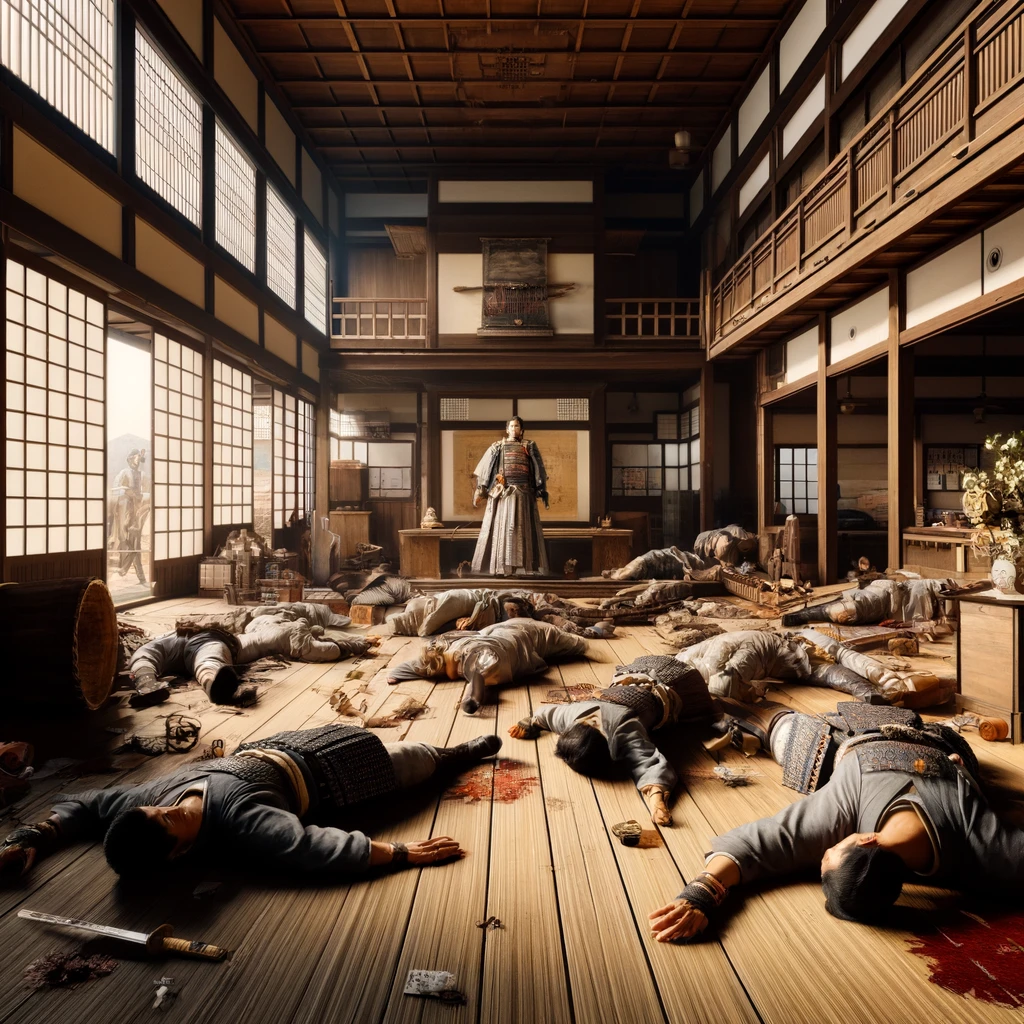
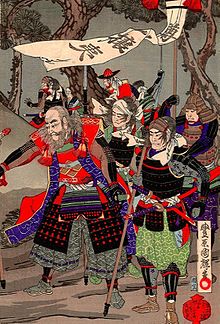
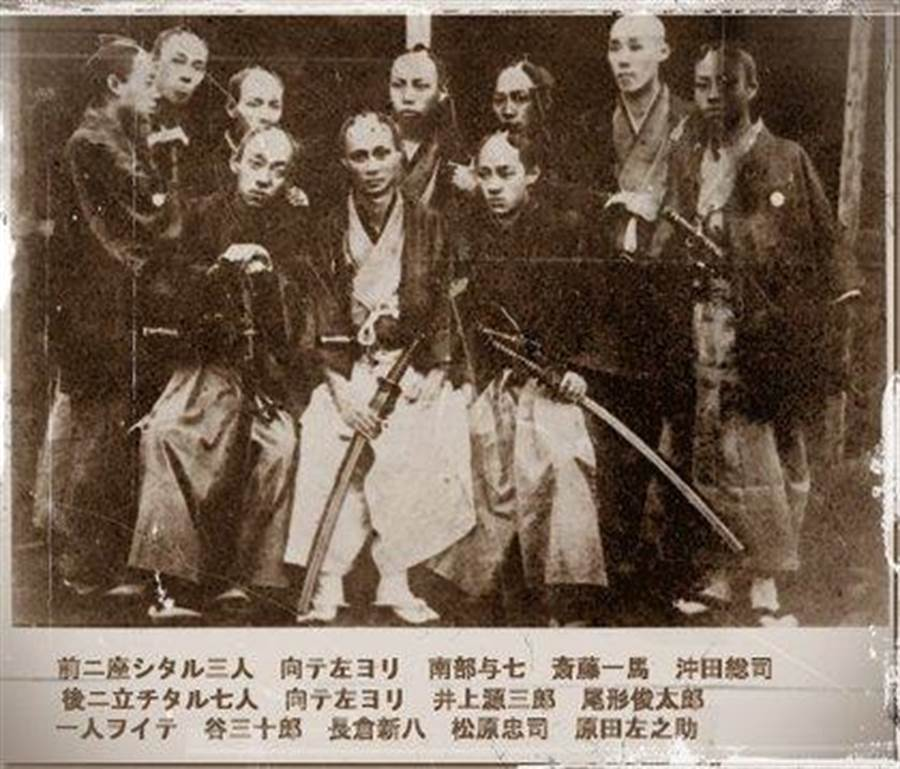 新選組 (Shinsengumi)
新選組 (Shinsengumi) 
